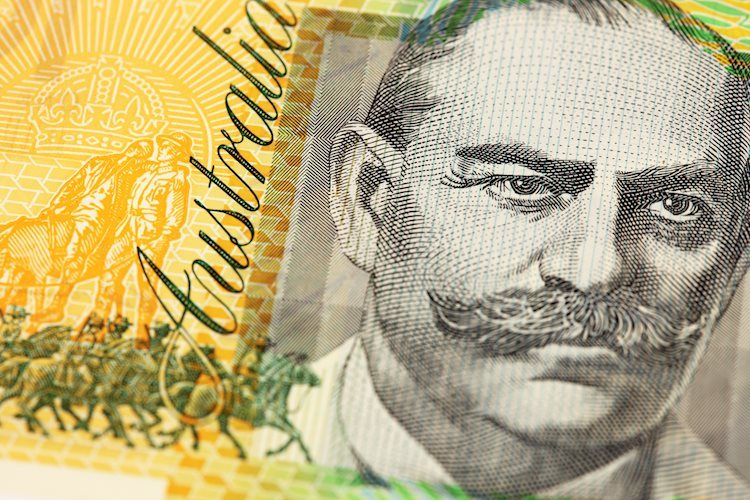- AUD/USD shows an increase, climbing to 0.6950.
- RBA’s Bullock was on the wires and maintained its hawkish stance.
- A weaker USD also benefited the Aussie.
The AUD/USD pair experienced an increase of 0.40% during Friday’s session, settling near 0.6950. Mixed sentiment data from the United States combined with the words of Reserve Bank of Australia’s (RBA) Governor Michele Bullock impacted the Aussie.
The RBA’s continued hawkish stance, despite the mixed Australian economic forecast and increasing inflation, has resulted in markets predicting only a 25-basis-point easing for 2024, which seems to be making the Aussie gain interest.
Daily digest market movers: Aussie gains following Gov. Bullock’s words
- Friday brought some adjustments in the AUD/USD pair, a reflection of the comments by RBA Governor Bullock.
- She expressed vigilance toward potential inflation risks, deeming it premature to consider any rate cuts.
- Simultaneously, Bullock acknowledged the uncertainty of the outlook, explaining that the bank doesn’t foresee being in a position to cut rates in the near term. She noted that, relative to other countries, Australia’s policy rate is at its peak of 4.35%.
- A weakened Greenback stems from mixed sentiment figures and weak housing market data from the United States.
- As monetary policies diverge, the pair may see further upside.
AUD/USD technical outlook: AUD/USD buyers remain strong, outlook optimistic
On the technical side, the AUD/USD pair has shown significant volatility, with fluctuations favoring a slight bias toward bullish momentum. The Moving Average Convergence Divergence (MACD) validates this bias, demonstrating rising green bars.
The Relative Strength Index (RSI), an oscillator demonstrating market momentum, has maintained a value around 50 that points northwards and offers a bullish signal. Key support levels are at 0.6600-0.6630, whereas resistance appears near the 0.6650 region. A breakout in either direction could potentially hint at further directional intent.
RBA FAQs
The Reserve Bank of Australia (RBA) sets interest rates and manages monetary policy for Australia. Decisions are made by a board of governors at 11 meetings a year and ad hoc emergency meetings as required. The RBA’s primary mandate is to maintain price stability, which means an inflation rate of 2-3%, but also “..to contribute to the stability of the currency, full employment, and the economic prosperity and welfare of the Australian people.” Its main tool for achieving this is by raising or lowering interest rates. Relatively high interest rates will strengthen the Australian Dollar (AUD) and vice versa. Other RBA tools include quantitative easing and tightening.
While inflation had always traditionally been thought of as a negative factor for currencies since it lowers the value of money in general, the opposite has actually been the case in modern times with the relaxation of cross-border capital controls. Moderately higher inflation now tends to lead central banks to put up their interest rates, which in turn has the effect of attracting more capital inflows from global investors seeking a lucrative place to keep their money. This increases demand for the local currency, which in the case of Australia is the Aussie Dollar.
Macroeconomic data gauges the health of an economy and can have an impact on the value of its currency. Investors prefer to invest their capital in economies that are safe and growing rather than precarious and shrinking. Greater capital inflows increase the aggregate demand and value of the domestic currency. Classic indicators, such as GDP, Manufacturing and Services PMIs, employment, and consumer sentiment surveys can influence AUD. A strong economy may encourage the Reserve Bank of Australia to put up interest rates, also supporting AUD.
Quantitative Easing (QE) is a tool used in extreme situations when lowering interest rates is not enough to restore the flow of credit in the economy. QE is the process by which the Reserve Bank of Australia (RBA) prints Australian Dollars (AUD) for the purpose of buying assets – usually government or corporate bonds – from financial institutions, thereby providing them with much-needed liquidity. QE usually results in a weaker AUD.
Quantitative tightening (QT) is the reverse of QE. It is undertaken after QE when an economic recovery is underway and inflation starts rising. Whilst in QE the Reserve Bank of Australia (RBA) purchases government and corporate bonds from financial institutions to provide them with liquidity, in QT the RBA stops buying more assets, and stops reinvesting the principal maturing on the bonds it already holds. It would be positive (or bullish) for the Australian Dollar.
